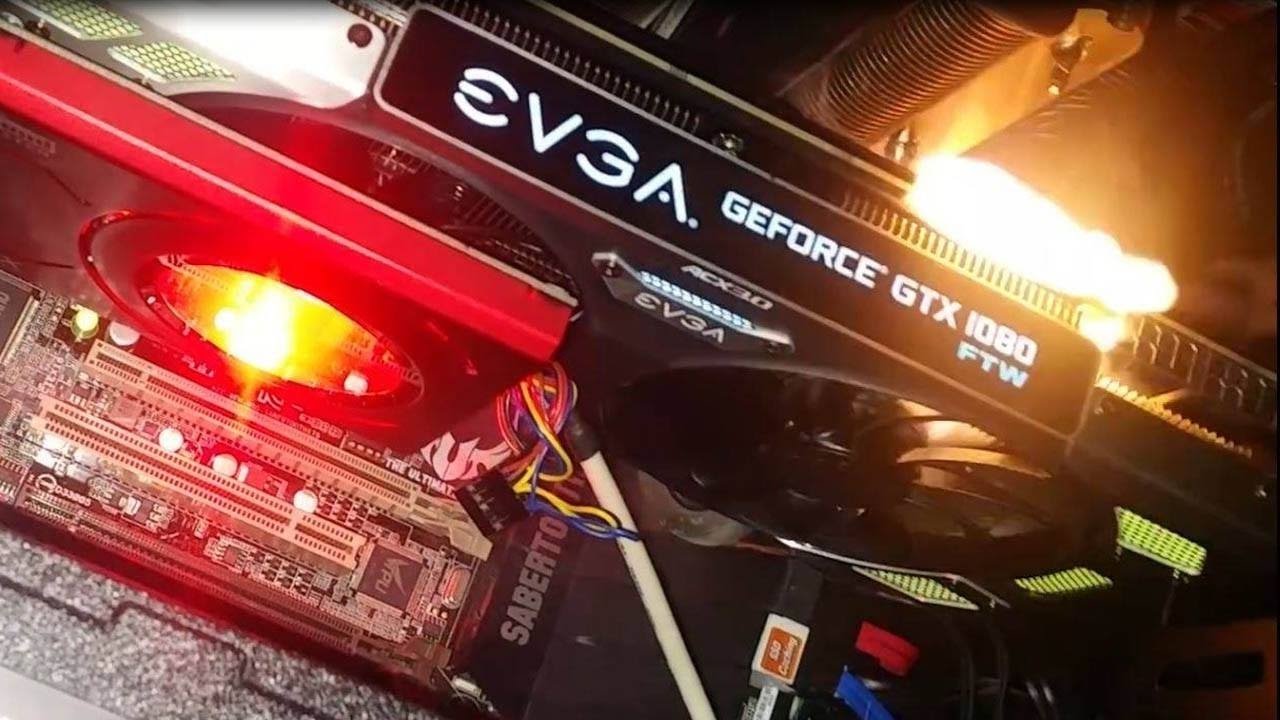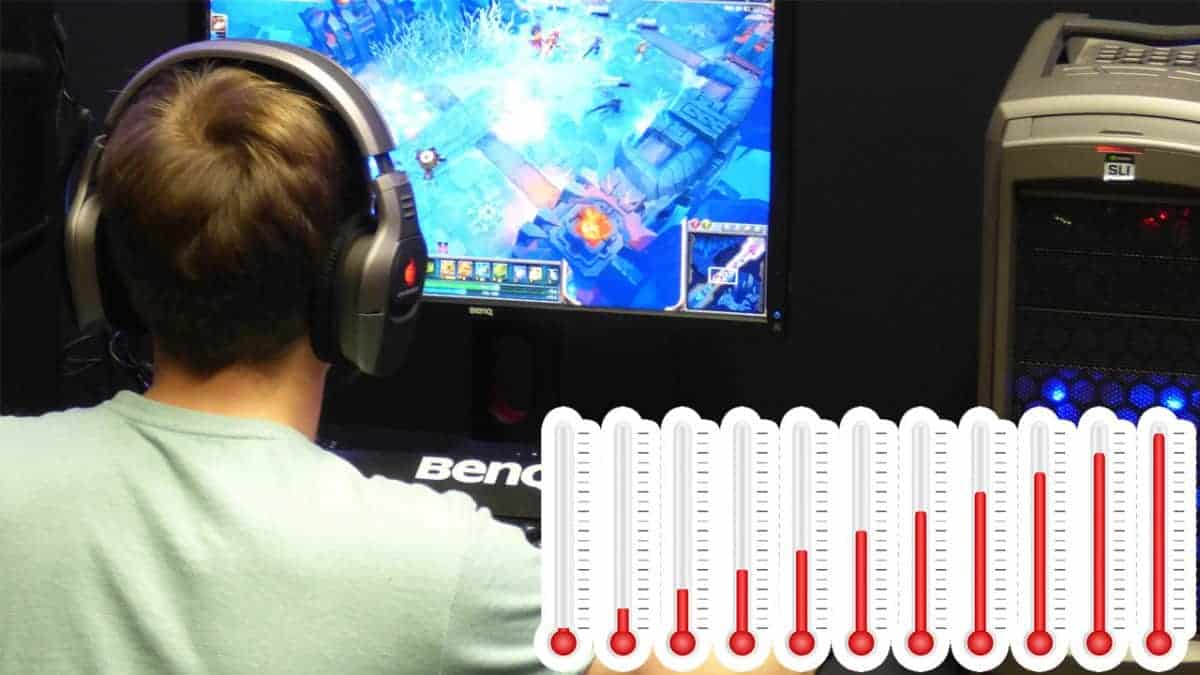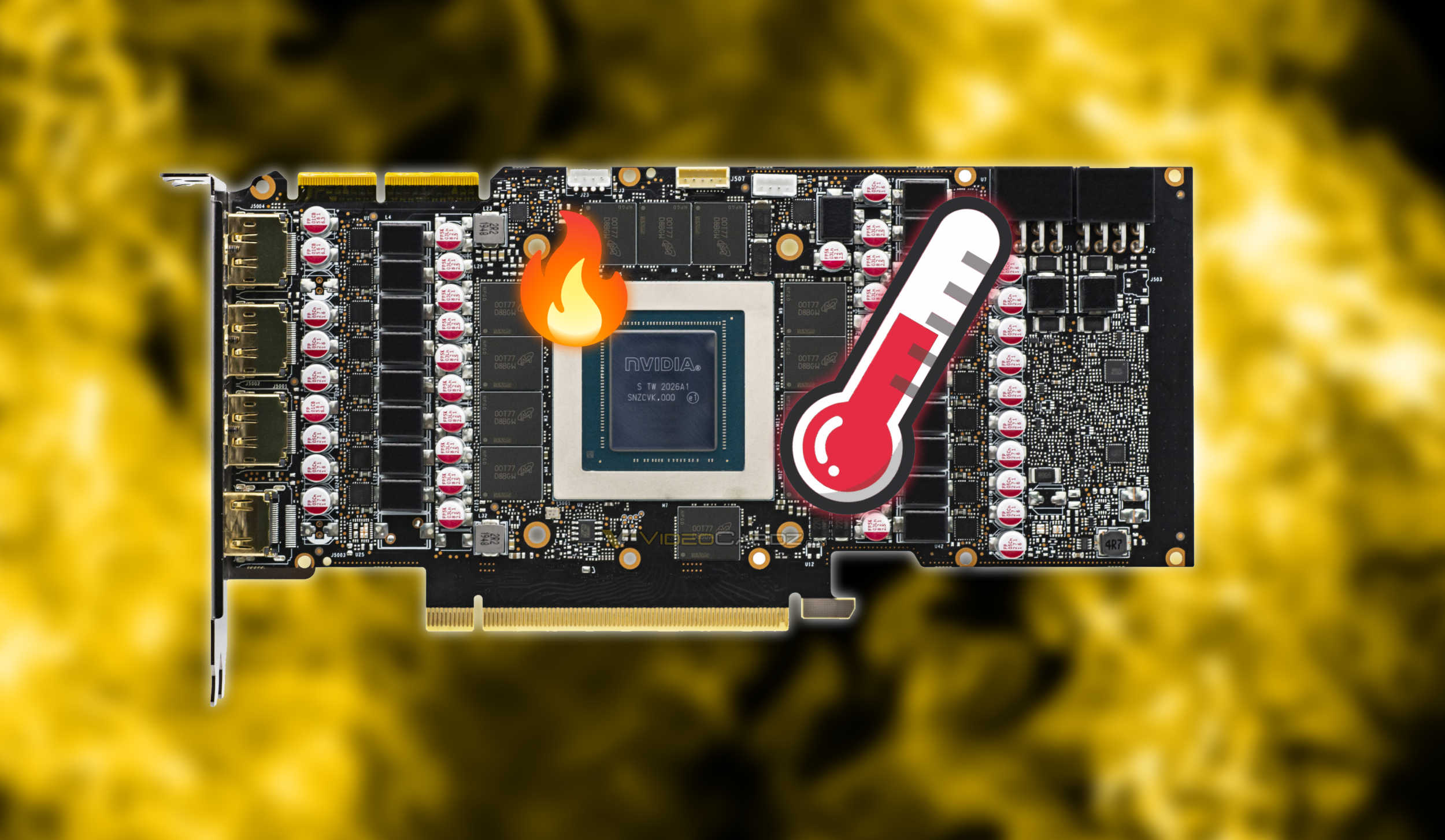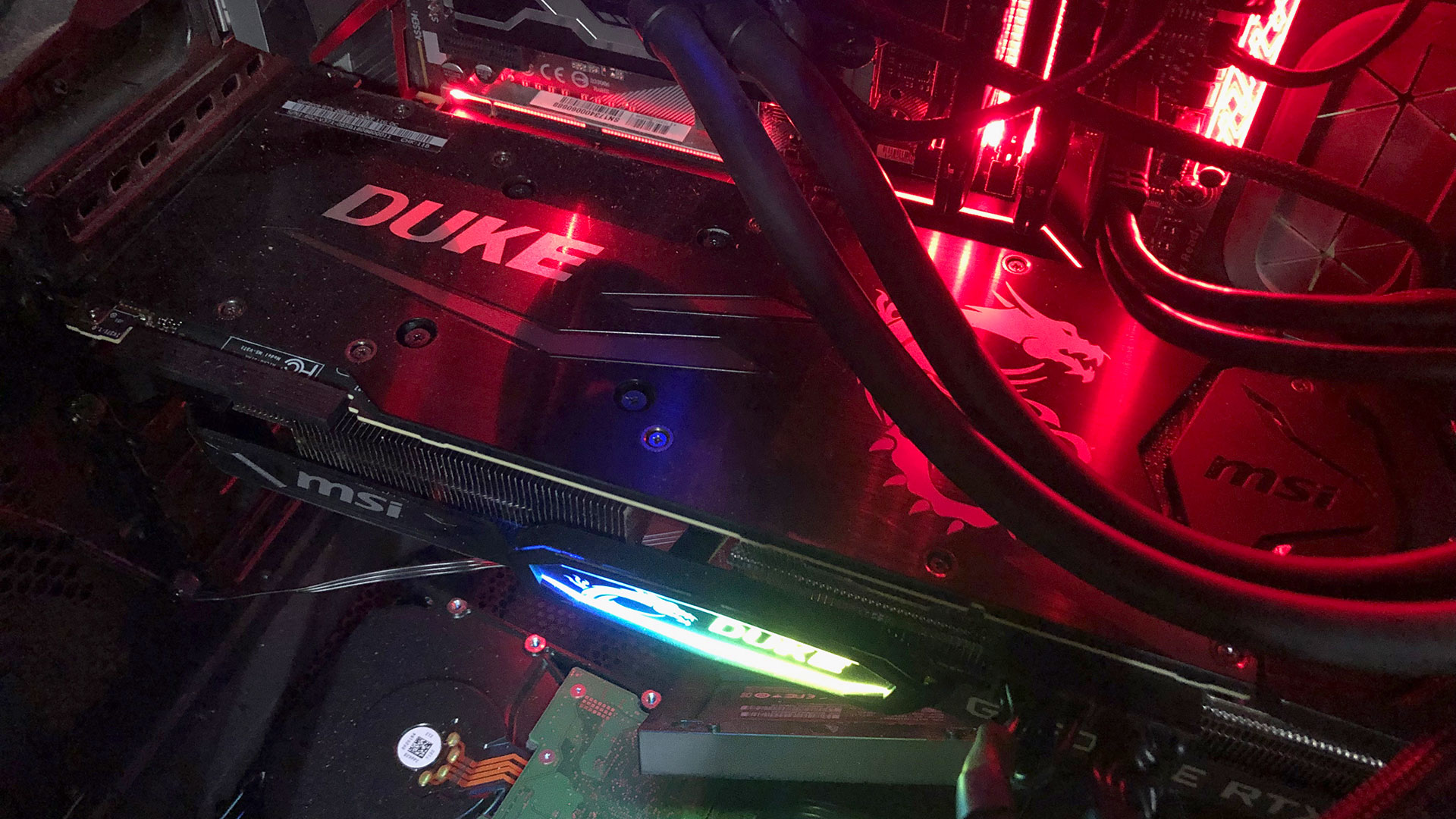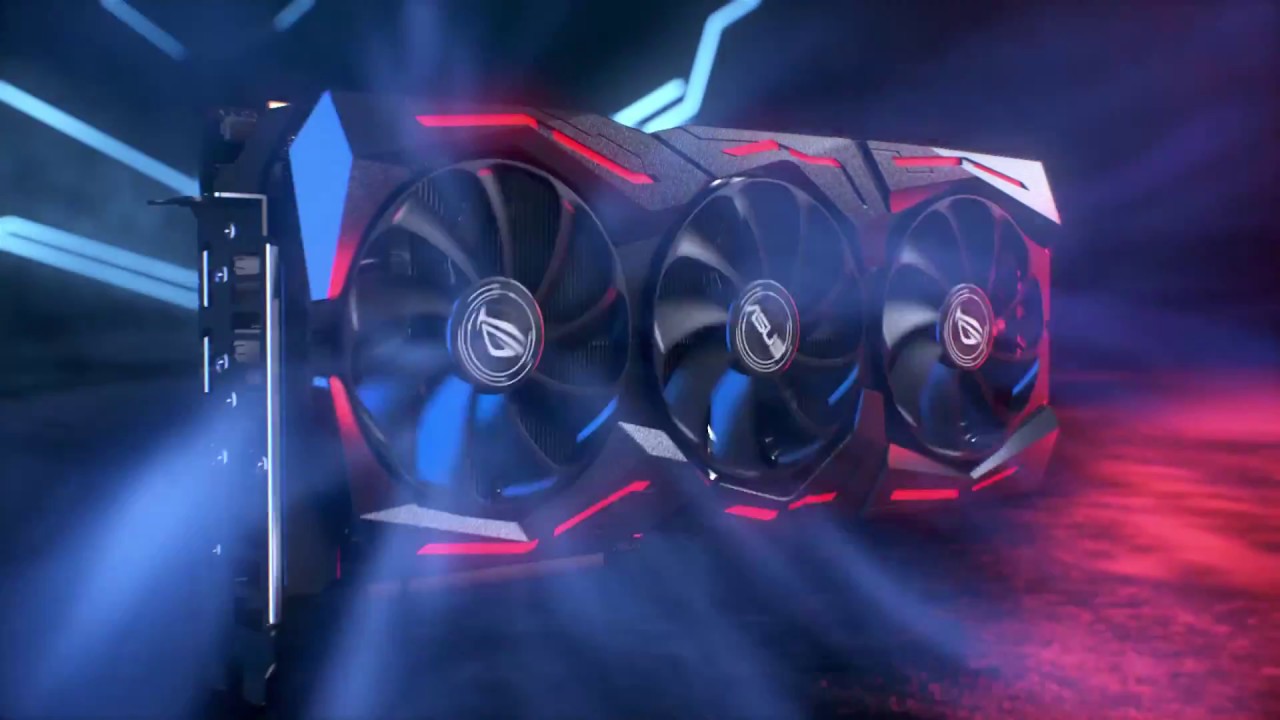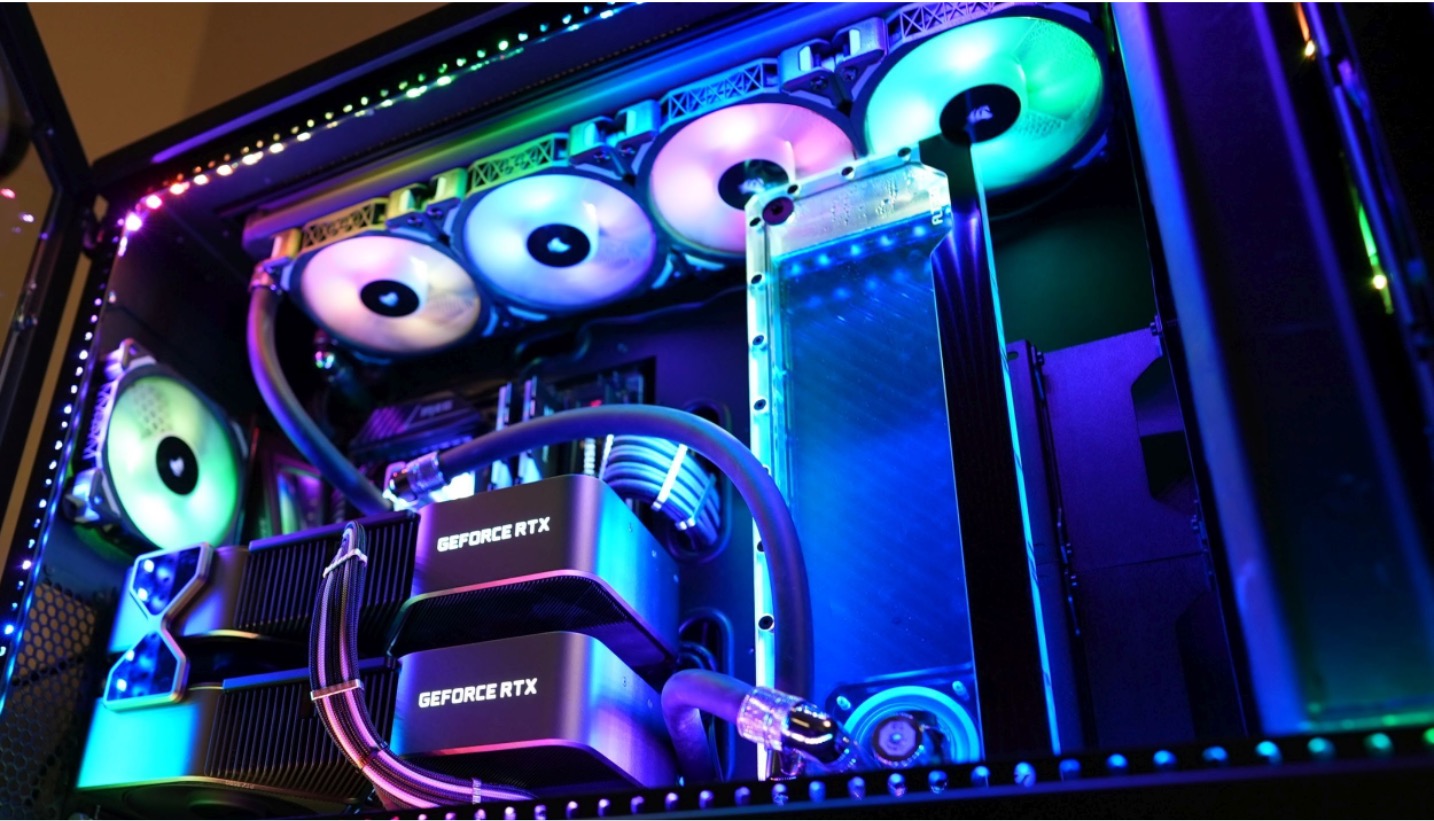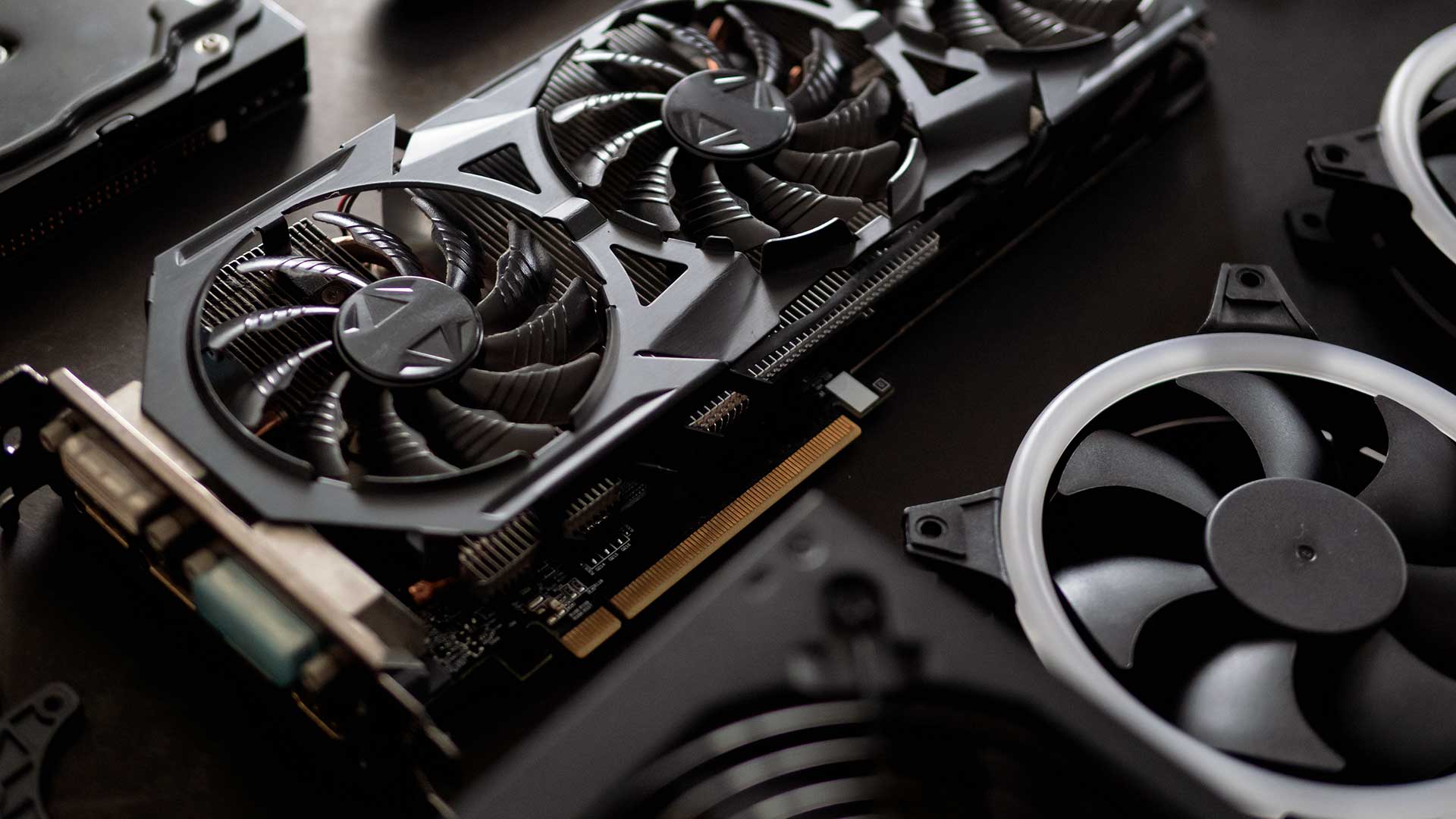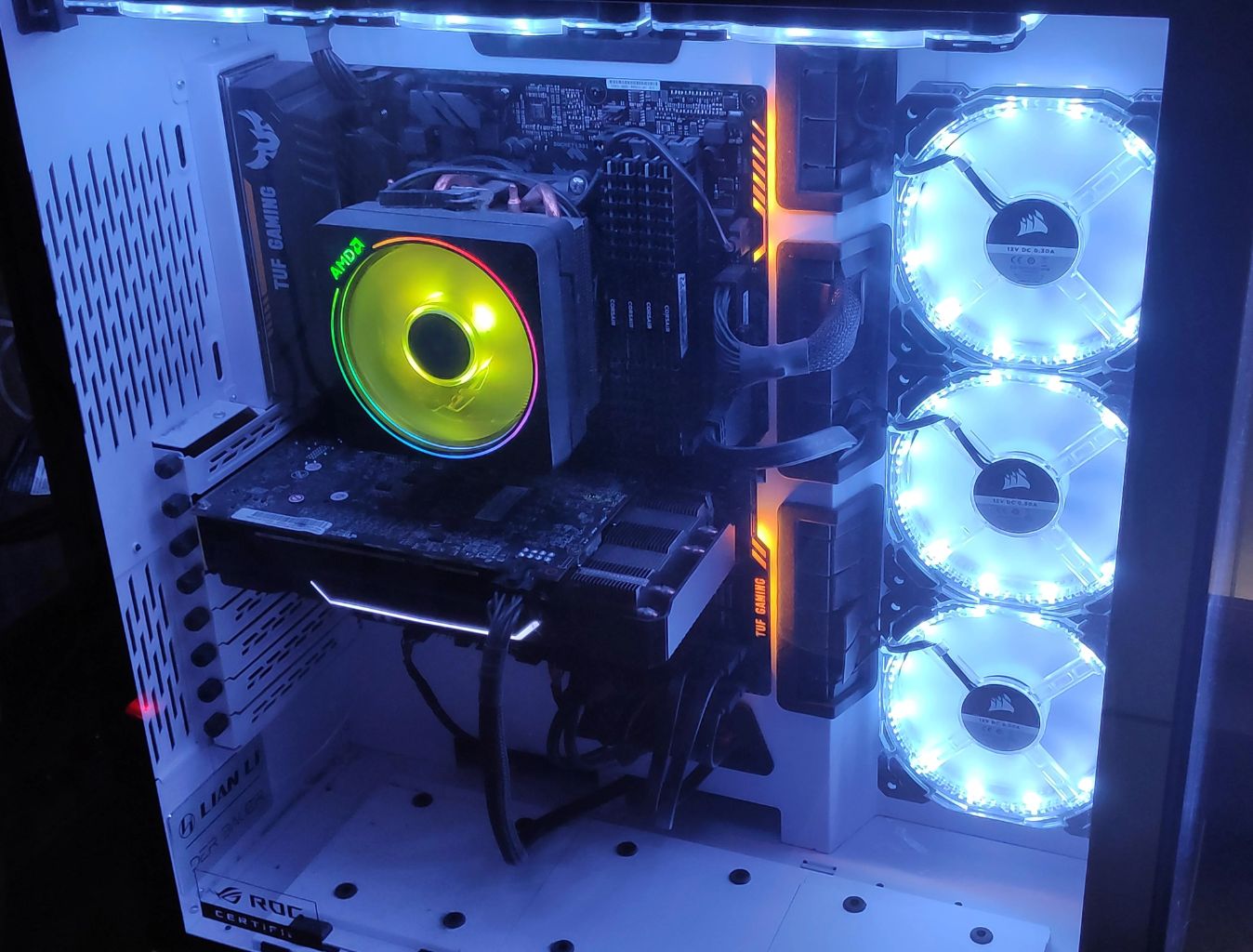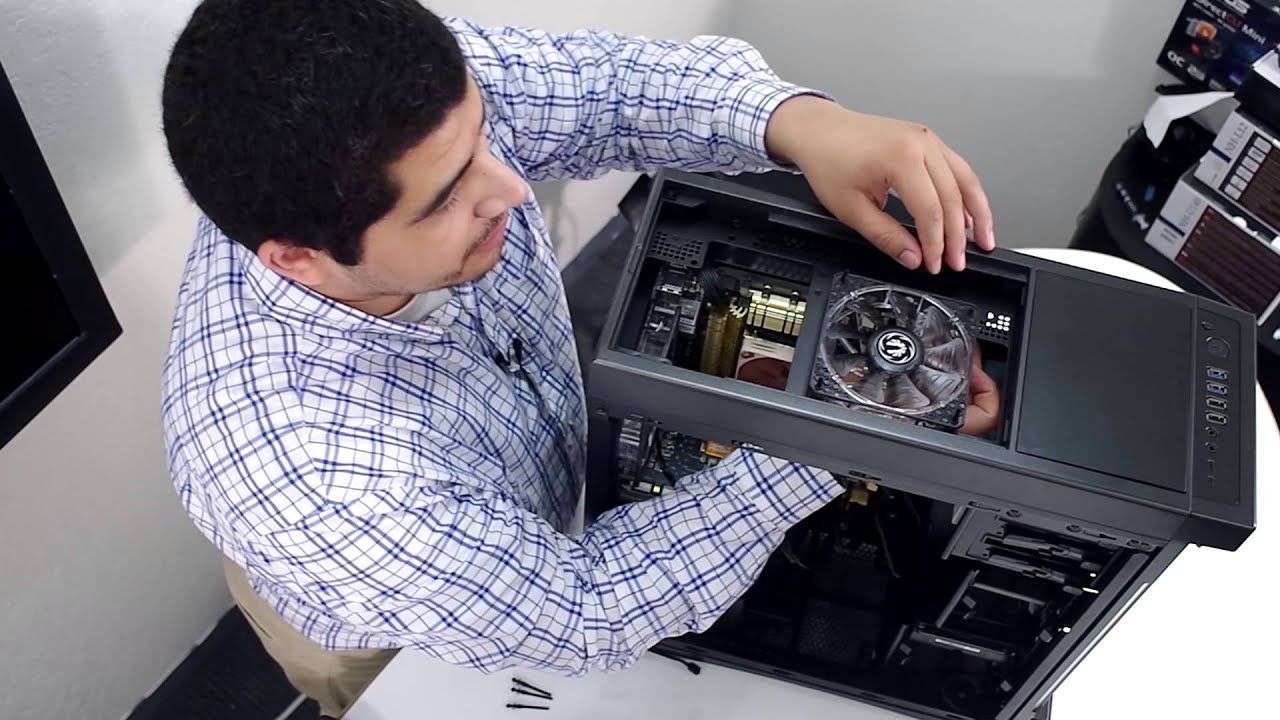Factors That Affect GPU Temperature
The temperature of your GPU (Graphics Processing Unit) can have a significant impact on its performance and lifespan. Several factors contribute to the temperature of your GPU, and understanding them can help you maintain optimal operating conditions. Here are some key factors that affect GPU temperature:
- GPU Workload: The intensity of the tasks your GPU is performing can impact its temperature. High-demand tasks like gaming or running graphics-intensive software push your GPU to work harder, causing it to generate more heat.
- Ambient Temperature: The temperature of the environment in which your computer is located can affect GPU temperature. If the room is already warm, it will impact the cooling efficiency of your system, leading to higher GPU temperatures.
- Cooling System: The effectiveness of your computer’s cooling system plays a crucial role in maintaining optimal GPU temperature. A well-designed cooling system with efficient fans and heatsinks can dissipate heat effectively, keeping the GPU temperature within a safe range.
- Dust and Dirt: Accumulated dust and dirt within your computer can obstruct airflow, leading to inadequate cooling. This can result in higher GPU temperatures. Regularly cleaning your computer and ensuring proper airflow can prevent overheating.
- Overclocking: Overclocking, which involves pushing your GPU beyond its default clock speed, can significantly increase its temperature. The higher the clock speed, the more heat the GPU generates. Proper cooling is crucial when overclocking to avoid thermal issues.
- GPU Design and Quality: The design and quality of the GPU itself can influence its temperature. GPUs with more efficient architectures and better cooling solutions tend to run cooler. It’s important to consider these factors when choosing a GPU for your system.
By taking these factors into account, you can better understand what affects the temperature of your GPU. This knowledge will enable you to make informed decisions in terms of system maintenance, cooling solutions, and optimizing GPU performance for a smoother computing experience.
Safe Operating Temperature Range for GPUs
Every GPU has a safe operating temperature range, which is the range of temperatures within which the graphics card can operate without encountering any issues. It’s important to know this range to ensure that your GPU is functioning optimally and to avoid potential damage. Here is a general guideline on the safe operating temperature range for GPUs:
The typical safe operating temperature range for most GPUs is between 60°C to 85°C (140°F to 185°F). This range can vary depending on the specific model and manufacturer, so it’s always best to check the documentation or the manufacturer’s website for the recommended operating temperature range.
Running your GPU within this safe range ensures that it maintains stability, performance, and longevity. Operating the GPU at temperatures below or above this range can lead to various issues.
If the GPU temperature is too low, it may indicate that the cooling system is overly efficient or that the GPU is not being utilized to its full potential. This can result in reduced performance in graphics-intensive tasks. In extreme cases, excessively low temperatures can cause condensation, which can damage electronic components.
On the other hand, if the GPU temperature exceeds the upper limit of the safe operating range, it can lead to thermal throttling, system instability, and even permanent damage. Modern GPUs are equipped with built-in mechanisms, such as thermal throttling, to protect against overheating. When the GPU reaches a certain temperature threshold, it automatically reduces its clock speed to lower the temperature. While this helps prevent overheating, it can result in a decrease in performance.
It’s worth noting that the safe operating temperature range mentioned above is a general guideline. Some GPUs are designed to handle higher temperatures, especially those used in gaming laptops or high-performance desktops.
To ensure that your GPU stays within the safe operating temperature range, it’s essential to monitor its temperature during heavy usage, such as gaming or running graphic-intensive applications. Using software utilities or hardware monitoring tools can provide real-time temperature readings for your GPU, allowing you to take appropriate action if the temperature approaches the upper limit.
By keeping your GPU within the safe operating temperature range, you can prolong its lifespan, maintain stable performance, and prevent any potential damage or issues associated with overheating.
Monitoring GPU Temperature
Monitoring the temperature of your GPU is crucial to ensure it stays within safe operating limits and to identify any potential issues related to overheating. By keeping an eye on the GPU temperature, you can take appropriate measures to prevent performance degradation and potential damage. Here are some methods for monitoring GPU temperature:
1. Software Utilities: Many software utilities allow you to monitor the temperature of your GPU in real-time. Popular options include MSI Afterburner, GPU-Z, and HWMonitor. These programs provide detailed information about GPU temperature, fan speed, clock speeds, and more. They often come with customizable alerts and overlays to notify you if the temperature exceeds a certain threshold.
2. Graphics Card Control Panels: Graphics card manufacturers often provide control panels or software tools that allow you to monitor and manage your GPU. NVIDIA’s GeForce Experience and AMD’s Radeon Software are examples of such tools. These control panels provide temperature monitoring features along with other settings and optimizations specific to the respective graphics cards.
3. Third-Party Hardware Monitoring Tools: Some motherboards or cooling system manufacturers offer hardware monitoring solutions that can provide real-time temperature readings for your GPU. These tools typically require additional hardware, such as temperature sensors or modules, to be installed in your system. They offer more advanced monitoring capabilities and may provide more accurate temperature readings.
4. On-Screen Display Overlays: Software utilities like MSI Afterburner allow you to display GPU temperature and other relevant information as an overlay on your screen while you’re using the computer. This can be particularly useful during gaming sessions or when running demanding applications as it provides real-time temperature feedback without having to switch to a separate monitoring program.
Monitoring the GPU temperature is not only important for maintaining optimal performance but also for identifying potential cooling issues or hardware problems. If you notice consistently high temperatures or sudden temperature spikes, it may indicate a problem with your cooling system, such as a faulty fan or inadequate airflow. Taking prompt action can help prevent long-term damage to your GPU.
Remember, regular temperature monitoring and maintenance can go a long way in ensuring the longevity and performance of your GPU. By staying vigilant and addressing temperature-related issues promptly, you can keep your GPU operating within a safe temperature range and enjoy smooth and reliable graphics performance.
Consequences of Overheating
Allowing your GPU to overheat can have detrimental effects on both its performance and lifespan. Heat is the enemy of electronic components, and prolonged exposure to high temperatures can lead to various consequences. Understanding the potential consequences of overheating can help you take preventive measures and mitigate any damage. Here are some of the common consequences of GPU overheating:
1. Performance Degradation: When a GPU reaches high temperatures, it is more susceptible to thermal throttling. Thermal throttling is a built-in mechanism that reduces the clock speed of the GPU to lower the temperature and prevent overheating. As a result, the GPU’s performance may decrease, causing lags, frame rate drops, and overall sluggishness during gaming or graphics-intensive tasks.
2. System Instability and Crashes: Overheating can lead to system instability and frequent crashes. When the temperature of the GPU exceeds its safe operating range, it can cause errors and inconsistencies in data processing, resulting in system freezes or sudden shutdowns. Continuous exposure to high temperatures can potentially damage the GPU or other components, leading to permanent system instability.
3. Reduced Lifespan: Excessive heat can degrade the lifespan of your GPU. Prolonged exposure to high temperatures can cause the electronic components to wear out more quickly. Over time, this can lead to irreversible damage and ultimately shorten the overall lifespan of the GPU.
4. Component Damage: Overheating can cause damage not only to the GPU but also to other critical components in your computer. When the GPU generates excessive heat, it can affect nearby components such as the motherboard, memory modules, and power supply. Heat damage can result in malfunctioning or permanently damaged components.
5. Fire Hazard: While rare, extreme GPU overheating can pose a fire hazard. Excessive heat can cause thermal runaway, where the GPU generates even more heat than it can dissipate. In severe cases, this can lead to a thermal event that poses a risk of fire or damage to your entire system.
It’s important to note that modern GPUs have built-in safety features, such as thermal throttling and automatic shutdown, to protect against extreme heat. However, relying solely on these safety measures is not recommended, as continuous exposure to high temperatures can still cause long-term damage.
To prevent the consequences of overheating, ensure proper airflow within your computer case, regularly clean out dust and debris, and consider upgrading your cooling system if necessary. Additionally, monitoring the temperature of your GPU and taking prompt action if it exceeds safe limits can help prevent performance degradation and potential damage, ultimately extending the lifespan of your GPU.
Common Causes of High GPU Temperature
High GPU temperature can be a cause for concern as it can lead to performance issues, system instability, and potential damage to your graphics card. Understanding the common causes of high GPU temperature can help you identify and address the underlying factors that contribute to overheating. Here are some of the most common causes:
1. Inadequate Cooling System: One of the primary causes of high GPU temperature is an inadequate cooling system. If your computer’s cooling system, including fans and heat sinks, is not functioning properly or is clogged with dust, it can impede the airflow to the GPU, leading to increased temperatures.
2. Poor Case Airflow: Another factor that can contribute to high GPU temperature is poor case airflow. When the computer case does not have sufficient airflow, the hot air generated by the GPU and other components becomes trapped, preventing effective heat dissipation. This can elevate the temperature within the case, directly affecting the GPU.
3. Overclocking: Overclocking your GPU, which involves running it at higher clock speeds than the manufacturer’s specifications, can significantly increase its temperature. As the clock speeds increase, so does the power consumption and heat generation of the GPU. Without adequate cooling, overclocked GPUs can quickly reach high temperatures and may become prone to overheating.
4. Insufficient Thermal Paste: Thermal paste is applied between the GPU and the heat sink to improve heat transfer. Over time, the thermal paste can dry out or become degraded, resulting in poor thermal conductivity and increased GPU temperatures. Regularly checking and replacing the thermal paste can help maintain optimal heat dissipation.
5. Ambient Temperature: The room temperature in which your computer is located can also influence the GPU temperature. If the ambient temperature is high, it becomes more challenging for the cooling system to dissipate heat efficiently, leading to increased GPU temperatures.
6. High Workload: Running graphically intensive applications, such as AAA games or 3D rendering software, can put a significant load on the GPU, causing it to generate more heat. The higher the workload, the more heat the GPU will produce, increasing the temperature. Ensuring adequate cooling is crucial to offset the heat generated during these demanding tasks.
7. Dust and Debris: Accumulated dust and debris can obstruct airflow and act as an insulator, trapping heat within the computer case. Regularly cleaning your computer, especially the fans and heat sinks, can prevent dust buildup and help maintain optimal airflow for effective cooling.
Addressing these common causes of high GPU temperature can help ensure that your graphics card operates within safe temperature limits. Regularly cleaning your computer, improving case airflow, using effective cooling solutions, and avoiding excessive overclocking can all contribute to reducing GPU temperatures and maintaining optimal performance.
Tips for Keeping Your GPU Cool
Keeping your GPU (Graphics Processing Unit) cool is essential for maintaining optimal performance, stability, and longevity. High GPU temperatures can lead to performance issues, system crashes, and potential damage. Fortunately, there are several tips and techniques you can employ to ensure your GPU stays cool. Here are some effective ways to keep your GPU temperature in check:
- Ensure Adequate Airflow: Good airflow is crucial for cooling your GPU. Make sure your computer case has proper ventilation and enough fans to facilitate the movement of air. Positioning your case in a well-ventilated area, away from obstructions, can also help improve airflow.
- Clean Dust and Debris: Regularly clean your computer to remove dust and debris that can accumulate on fans, heatsinks, and other components. Use compressed air or an anti-static brush to gently clean these areas. Clogged fans can impede airflow and lead to higher GPU temperatures.
- Upgrade Your Cooling System: If you find that your GPU is consistently running hot, consider upgrading your cooling system. This can involve installing additional case fans, upgrading to more efficient heatsinks, or even using liquid cooling solutions. Improved cooling can significantly reduce GPU temperatures.
- Manage Cable Placement: Proper cable management can contribute to better airflow within your computer case. Ensure that cables are neatly organized and out of the way, allowing for unrestricted airflow to the GPU and other components.
- Avoid Overclocking: Overclocking your GPU increases its power consumption and generates more heat. If you’re experiencing high GPU temperatures, consider running your GPU at its stock clock speeds or reducing the overclock. This can help keep temperatures within a safe range.
- Monitor GPU Temperature: Utilize software utilities or hardware monitoring tools to keep track of your GPU temperature in real-time. This allows you to identify any sudden temperature spikes or consistently high temperatures, enabling you to take appropriate action to mitigate potential heat-related issues.
- Consider Undervolting: Undervolting is the process of reducing the voltage supplied to the GPU, which can help lower its power consumption and heat generation. This can be done through software tools specifically designed for undervolting your GPU.
- Keep Ambient Temperature in Check: If your computer is located in a hot environment, it can contribute to higher GPU temperatures. Ensure that the room temperature is well-regulated, and consider using air conditioning or additional cooling measures to keep the overall temperature down.
Implementing these tips will help you maintain a cool and efficient GPU. By ensuring adequate airflow, managing temperatures, and practicing regular maintenance, you can optimize the performance and lifespan of your GPU, allowing you to enjoy a smooth and stable computing experience.
Understanding Thermal Throttling
Thermal throttling is a built-in mechanism employed by modern GPUs (Graphics Processing Units) to protect themselves from overheating. When a GPU reaches a certain temperature threshold, it automatically reduces its clock speed and performance to lower the temperature. Understanding how thermal throttling works is crucial for maintaining the stability and longevity of your GPU.
Thermal throttling is designed to prevent the GPU from reaching dangerously high temperatures that can cause damage or system instability. When the GPU exceeds the predefined temperature limit, it initiates a self-regulating process to reduce its power consumption and heat generation.
When thermal throttling is activated, the GPU lowers its clock speed, which results in reduced performance. The GPU may also decrease its voltage and power consumption, further limiting its operations. These adjustments effectively reduce the amount of heat generated, allowing the GPU temperature to decrease gradually.
Thermal throttling ensures that the GPU remains within its safe operating temperature range. By controlling the GPU’s temperature, it protects the integrity of the hardware, prolongs the lifespan of the GPU, and prevents potential system crashes or damage.
It’s important to note that thermal throttling is a sign that your GPU is experiencing excessive heat. While it helps prevent overheating, it can also result in reduced performance during graphically intensive tasks such as gaming or running demanding software. Therefore, it is crucial to address the underlying causes of high GPU temperature to minimize the frequency and impact of thermal throttling.
To mitigate thermal throttling, you can take several measures:
- Improve Cooling: Enhance your computer’s cooling system by ensuring proper airflow, cleaning dust and debris, and using efficient cooling solutions such as additional fans or liquid cooling.
- Avoid Overclocking: Overclocking increases the GPU’s power consumption and heat generation. Running the GPU at its default clock speeds can help prevent excessive heat buildup and reduce the likelihood of thermal throttling.
- Monitor and Manage GPU Temperature: Use temperature monitoring software to keep track of your GPU temperature. If you notice consistently high temperatures, take action to identify and address the underlying factors causing the excessive heat.
- Ensure Proper Case Ventilation: Proper airflow within the computer case is essential for efficient cooling. Keep the case well-ventilated and manage cable placement to avoid obstructing airflow to the GPU and other components.
- Consider Undervolting: Undervolting, when performed properly, can lower the GPU’s power consumption and heat output without sacrificing too much performance. This may reduce the likelihood of thermal throttling while keeping temperatures within acceptable limits.
Understanding the concept and implications of thermal throttling empowers you to effectively manage your GPU’s temperature. By implementing proper cooling measures and adjusting settings to maintain optimal temperature ranges, you can minimize the impact of thermal throttling, maximize performance, and ensure the longevity of your GPU.
Overclocking and GPU Temperature
Overclocking your GPU (Graphics Processing Unit) is a popular method to maximize its performance and squeeze out extra power for demanding tasks such as gaming or rendering. However, overclocking increases the power consumption and heat generation of the GPU, which can lead to higher temperatures. Understanding the relationship between overclocking and GPU temperature is important to ensure the stability and longevity of your graphics card.
When you overclock your GPU, you increase its clock speed beyond its default or factory-set value. This results in faster processing and higher performance. However, as the clock speed increases, the GPU requires more power and generates more heat.
Higher temperatures can be a consequence of overclocking, especially if the cooling system is not adequate to dissipate the additional heat. Over time, excessive heat can lead to performance degradation, system instability, and potentially permanent damage to the GPU.
It’s important to monitor the temperature of your GPU while overclocking to ensure it stays within a safe operating range. Using software utilities or hardware monitoring tools, you can track the temperature in real-time and make adjustments if necessary.
To mitigate the impact of increased temperatures due to overclocking, consider the following tips:
- Quality Cooling System: Ensure your computer has a reliable and efficient cooling system, including fans, heatsinks, and possibly liquid cooling solutions. This will help dissipate the extra heat generated by the overclocked GPU.
- Avoid Excessive Overclocking: Pushing your GPU to extreme clock speeds can significantly raise the temperature. Find a balance between performance and temperature by gradually increasing the clock speeds and stress testing the GPU to gauge its stability and temperature response.
- Monitor GPU Temperature: Keep a close eye on the temperature of your GPU while running demanding tasks under overclocked settings. If the temperature approaches the upper limits of the safe operating range, consider reducing the clock speeds or adjusting the voltage to lower the heat.
- Ensure Proper Ventilation: Make sure your computer case has efficient airflow by ensuring proper cable management and managing components to prevent blockage of ventilation outlets. Good airflow helps in dissipating the heat from the GPU.
- Regular Maintenance: Clean your computer regularly to remove dust and debris that can obstruct airflow and insulate components, thereby trapping heat. Cleaner components and better airflow contribute to lower temperatures during overclocked operations.
Remember that every GPU is different, and the overclocking potential can vary. What works for one GPU may not work for another, even if they are the same model. It is important to proceed with caution and gradually increase clock speeds while monitoring the temperature closely.
Always keep in mind that overclocking carries certain risks, such as increased power consumption, elevated temperatures, and potential hardware damage if not done properly. It’s essential to strike a balance between performance gains and maintaining a safe temperature range to ensure the stability and longevity of your GPU.







